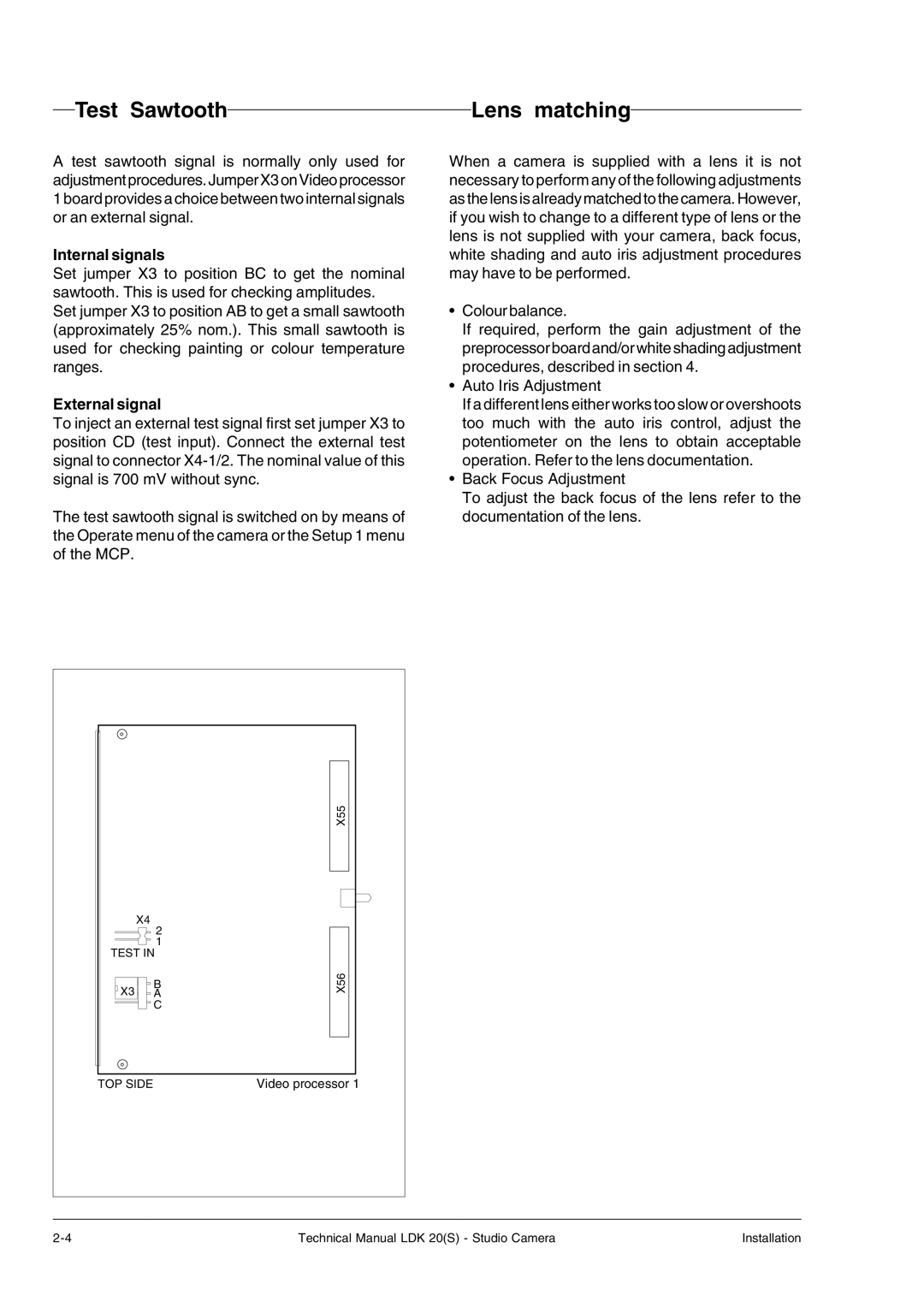
Test Sawtooth | Lens matching |
A test sawtooth signal is normally only used for adjustmentprocedures.JumperX3on Videoprocessor 1 board provides a choice between two internal signals or an external signal.
Internal signals
Set jumper X3 to position BC to get the nominal sawtooth. This is used for checking amplitudes. Set jumper X3 to position AB to get a small sawtooth (approximately 25% nom.). This small sawtooth is used for checking painting or colour temperature ranges.
External signal
To inject an external test signal first set jumper X3 to position CD (test input). Connect the external test signal to connector
The test sawtooth signal is switched on by means of the Operate menu of the camera or the Setup 1 menu of the MCP.
When a camera is supplied with a lens it is not necessary to perform any of the following adjustments as the lens is already matched to the camera. However, if you wish to change to a different type of lens or the lens is not supplied with your camera, back focus, white shading and auto iris adjustment procedures may have to be performed.
•Colour balance.
If required, perform the gain adjustment of the preprocessor board and/or white shading adjustment procedures, described in section 4.
•Auto Iris Adjustment
If a different lens either works too slow or overshoots too much with the auto iris control, adjust the potentiometer on the lens to obtain acceptable operation. Refer to the lens documentation.
•Back Focus Adjustment
To adjust the back focus of the lens refer to the documentation of the lens.
|
| A1 | |
|
| 55X | |
X4 | 2 |
| |
|
| ||
| 1 |
| |
TEST IN |
| ||
| B | 65 | |
X3 | X | ||
A | |||
| C |
| |
TOP SIDE |
| Video processor 1 | |
Technical Manual LDK 20(S) - Studio Camera | Installation |
